Once or twice a year I resolve to write down all of my dreams. Usually, I keep a diary for a couple days, weeks if I’m not up to much else, and then forget my plans until the cycle repeats itself. This undoubtedly says a lot about my ability to follow through on things, but it also says something about dreams – namely, that they’re generally pretty boring. Reading about them is never quite as satisfying as one hopes; more often than not, you’re left pondering the gap between the original, giddy experience and the poverty of the language left to memorialise it.
The creations of the cartoonist Robert Crumb, which include such counterculture icons as Mr Natural, Keep on Truckin’ and the cover of Janis Joplin’s Cheap Thrills, are regularly likened to fever dreams and nightmares for the way they show the id run amok. In a sense, R. Crumb’s Dream Diary – the record he’s been keeping for decades but only now elected to share with the world – is the work his entire career implies; the foul rag and bone shop he’s been plundering since the ’60s. As a compendium of the raw material that’s inspired a great artist, it will be of enormous interest to his admirers, although even they may find the book too raw, in more than one sense of the word: a showcase for Crumb’s trademark crudeness, without the redeeming wit of the finished products. Opening at random, I find this entry, from 28 October 2003:
It was a strong lucid dream […] The setting was some kind of public performance. I observed a lot of young people as they were enjoying a rock concert […] Some of the young men were sitting up on the girls’ butts as they gyrated and flexed them up and down in time to the music.
Crumb has never claimed to be a great prose stylist, though he certainly finds a recognisable voice here. It is hard to convey the effect of reading more than 400 pages of short, frank, frequently pornographic tableaus – more than once I was reminded of Sade’s The 120 Days of Sodom, both its shock value and its maddening interminability.
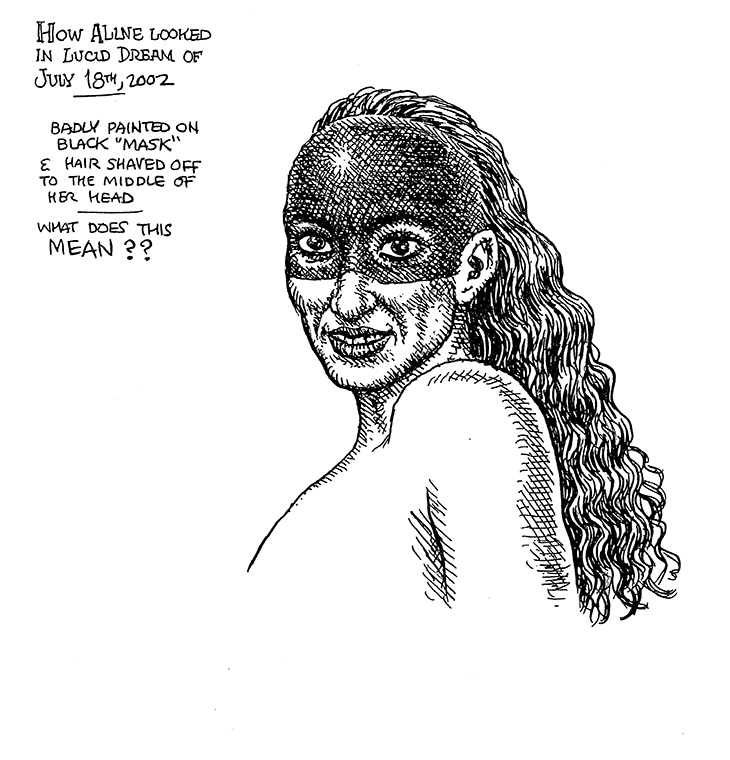
Illustration from R. Crumb’s Dream Diary (2018). © Robert Crumb, 2018
It’s the same kind of storytelling – whining, indulgent, but fitfully compelling – that we recognise from Terry Zwigoff’s Crumb, the documentary from 1995 that finally made its subject a household name. Zwigoff, a longtime friend (and bit player in the Dream Diary), depicted Crumb as a Freudian invalid, permanently shaken by abusive parents and cruel classmates. Drawing cartoons appears to have been way of treating these neuroses, not always successfully: ‘If I don’t draw for a while,’ Crumb explains, ‘I get really crazy. I start feeling really depressed, suicidal. But sometimes when I’m drawing I feel suicidal, too.’
When we left them at the end of the documentary, Crumb and his wife, the cartoonist Aline Kominsky-Crumb, were about to relocate to the French countryside, where they’ve lived ever since. While most of the Dream Diary’s entries date from after the move across the pond, together they form a raucous history of the US since the mid ’90s, beginning with the loucheness and lame spirituality of the Clinton years. The onset of the War on Terror finds Crumb’s unconscious in a state of bigoted hysteria, bayoneting foreign babies and facing off against unctuous Arabs. Punctuating these encounters are all the perversions you’d find in a typical Crumb comic strip – satanic cityscapes, compliant, rubbery black bodies, and one tryst with a blonde nymphet that would have made Nabokov blush.
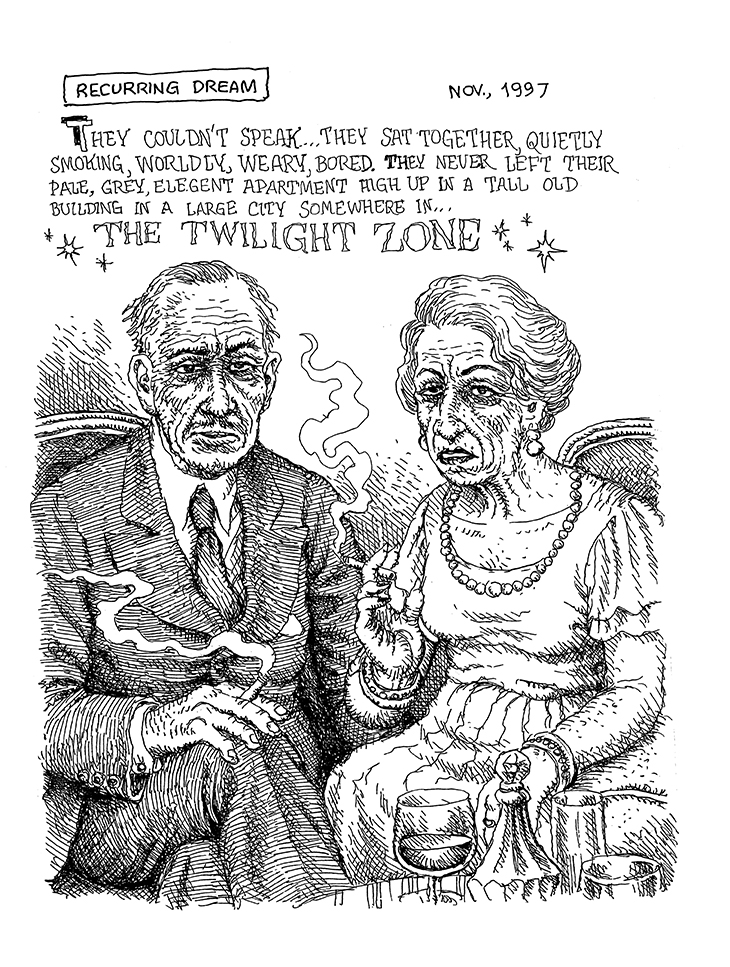
Illustration from R. Crumb’s Dream Diary (2018). © Robert Crumb, 2018
It seems somehow unsporting to condemn Crumb for the contents of his dreams, especially since he freely consented to have them published – then again, why publish them in the first place? To this one might respond: to study the creative process of a person who, no matter what one might think of his politics or his character, is one of the great creative minds of the 20th century and, at 75, very near the top of his game. And a few of the dreams recorded here do, indeed, read like treatments for gut-busting comics – ‘Dream of Being Kissed by George Bush’, dated 28 June 2005, almost justifies the entire Diary single-handedly.
Far more of the entries, however, are rough, nonsensical, hard to follow – in short, dreams. If there’s a lesson about creativity to be learned from the book, it is that, contra Hemingway, artists don’t just sit down and bleed. It’s not that Crumb or Hemingway or Nabokov dreamed bigger or better than the rest of us; rather, they knew how to lick their wild ideas into shape, elaborating in places and simplifying in others.
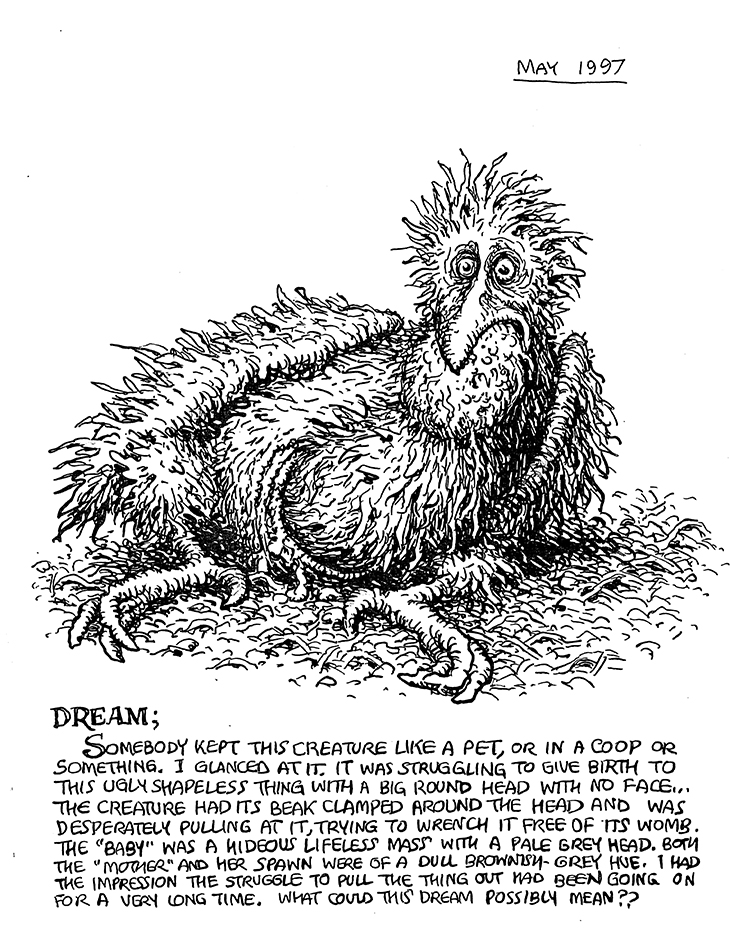
Illustration from R. Crumb’s Dream Diary (2018). © Robert Crumb, 2018
It was a central premise of psychoanalysis that people’s dreams provide a window on to the innermost parts of their minds. Robert Crumb’s work has been subjected to more psychoanalytic readings than almost anyone’s, and yet for the most part he’s thumbed his nose at these interpretations. How appropriate, and appropriately inappropriate, that 40 years’-worth of his dreams should turn out to be something of a dead end. His true genius, meanwhile, lurches on, too fearsome to be captured, let alone fully comprehended.
Crumb’s Dream Diary by Robert Crumb, published by Elara Press, will be released later this year.
Unlimited access from just $16 every 3 months
Subscribe to get unlimited and exclusive access to the top art stories, interviews and exhibition reviews.


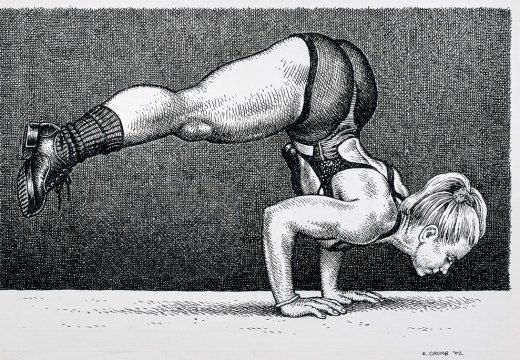
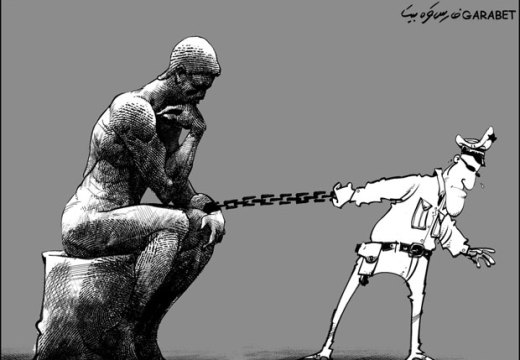
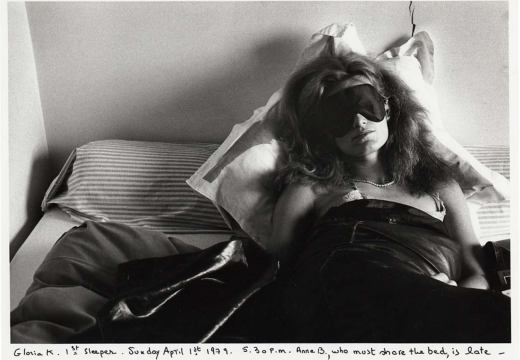









![Masterpiece [Re]discovery 2022. Photo: Ben Fisher Photography, courtesy of Masterpiece London](http://www.apollo-magazine.com/wp-content/uploads/2022/07/MPL2022_4263.jpg)
Has the Fitzwilliam lost the hang of things?